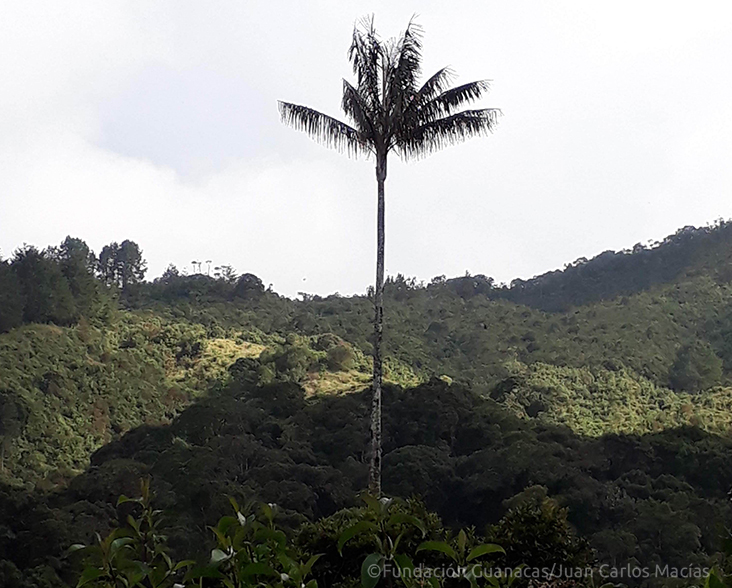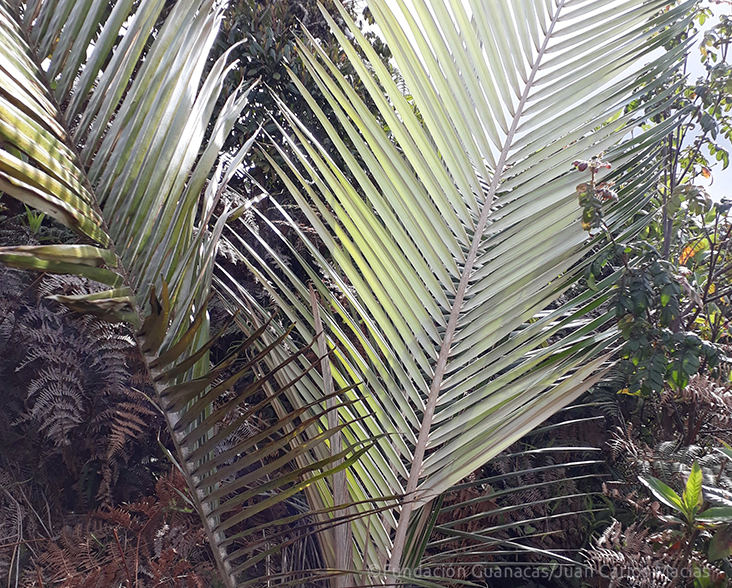Quindio Wax Palm
Species Data
Class: Monocotyledons
Order: Arecales
Family: Arecaeae
Scientific Name: Ceroxylon quindiuense
IUCN Red List status: Vulnerable
Description
As the national tree of Colombia and the tallest palm tree in the world, the Quindío Wax Palm is an ‘umbrella species’ whose conservation holds vast cultural and ecological significance. A large, fruit-bearing tree that can grow to heights of more than 60 meters, the palm is named for the thick layer of wax covering its wide, marbled stem. Also known as Andean Wax Palms, their dense crowns of feathered, fibrous leaves rise high above surrounding forest canopies as a defining feature of the landscape.
Behaviour
Quindío Wax Palms are slow growing, with a complete life cycle of up to 200 years. A dioeciously reproducing species, the trees produce fragrant flowers to attract the beetles that act as pollinators. The fruit of the Quindío Wax Palm hangs as bunches of vermillion berries, with each tree producing up to 24,000 fruits each year, providing an incredible source of food for numerous rare bird species and other fauna.


Climate and Range
Native to cool, humid montane forests, Quindío Wax Palms are found at high elevations, between 2000 and 3000 metres, in fragmented populations along the steep slopes of the Andes of Colombia and northern Peru. Preferring cool, temperate environments, the seedlings are dependent on the shade of forest canopy during the 50 years they take to reach maturity.
Threats and Conservation
Though evaluated as a Vulnerable IUCN red list species, the Quindío Wax Palm is classified as Endangered in Colombia. Historically exploited for timber, and its wax for candles and torches, the Quindío Wax Palm is still threatened by the intensive deforestation. Much of the remaining population now exists only as mature trees in open pastureland that was once temperate rainforest. Propagation is unsuccessful without the cover of forest as the seedlings dry out in the sun or are eaten by animals. Conservation of surviving forest and reforestation of cleared land are essential to recovery.
